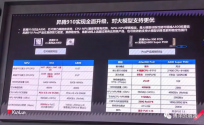sure, but Ascend-910C is likely going to require more power also. And we don't know what that will be. After all, A100 consumes 250-300w, depending on which source you use.I looked into it. H100’s peak power consumption is 700 watts. Ascend 910’s is 310 watts.
I'm not saying Ascend-910C won't have lower power consumption. Just that we don't know.
Pretty small concern. The fruit of computation will be far more than that. There are more reasons than that to worry about with energy efficiencyEnergy efficiency is still a concern. The energy in China isn’t that cheap where we can just hand wave concerns away.
More than half the cost from data centers in China come from power consumption and approximately 25% is coming from depreciation.




